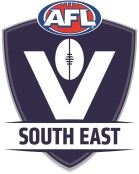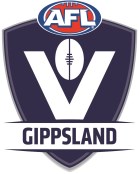By DAVID NAGEL
THE cross-commission boundaries that exist between AFL Gippsland and AFL South East are unique to country football – when one acts the other has no choice to prick up its ears and listen.
And that’s certainly the case after AFL Gippsland recently released its draft recommendations for 2017 after a thorough and comprehensive review of its senior leagues.
The review findings tell us a lot about AFL Gippsland, but two things in particular stand out.
Number one is the satisfaction that exists with its competition structures from its core to its Eastern boundary, with the Gippsland, Mid-Gippsland and North Gippsland Football Netball Leagues remaining untouched for 2017.
But the activity that has taken place on its western border, with the reshaping of the Alberton and Ellinbank leagues, and the resurrection of the West Gippsland Football Netball League, well that tells us that this was an area in need of some serious resuscitation.
And it’s an area that affects AFL South East, in particular its dreams and hopes of having divisional football in the South East Football Netball League (SEFNL) in the near future.
The existing Ellinbank clubs that will head to West Gippsland – Bunyip, Cora Lynn, Garfield, Kooweerup and Nar Nar Goon – well they sit on that cross-commission boundary, while current SEFNL clubs like Beaconsfield, Officer (ROC), Pakenham and Tooradin have a long and proud history in the West Gippsland League.
Therefore it seems strange that AFL South East did not have a seat at the review table to discuss this area of the region, but there has been some dialogue.
“There has but at the moment they’ve got their own challenges, the South East,” said AFL Gippsland region general manager Travis Switzer.
“At this stage, we’re probably only really concerned about our clubs. We had feedback from West Gippsland clubs – and from all of our clubs – that they didn’t want to go the other way to play their footy. They were pretty strong with that – they wanted to come back to Gippsland to play their football. So when we thought about 27 teams within that geographical area we feel that this is pretty good – that these three competitions are fairly even at the moment.”
The problem is we will have four nine-team competitions within a small geographical space in 2017, with Alberton, Ellinbank, West Gippsland and South East all fitting the mould.
AFL South East region general manager Jeremy Bourke said recent history would suggest the nine-team format presented its challenges.
“We acknowledge that it was not ideal for SEFNL to have nine teams in its inaugural season last year, and we want to engage with Gippsland about what the opportunities are for the future,” Bourke said.
“I’ve read the review and all of it makes sense, there are some very positive aspects to it and, once those competitions are settled and bedded down, we look forward to working with AFL Gippsland to work out ways to create some interaction between the leagues that border each other.
“But when we look at the big picture, we’ve got four leagues, in close proximity, with nine teams each. I understand the review, I understand the research and diligence that has been behind those recommendations, but now there’s an opportunity to build on that further and create something even more dynamic.”
Bourke and AFL South East have had different priorities to AFL Gippsland over the last 12 months, with the formation of SEFNL and governance issues associated with the Mornington Peninsula Nepean Football League taking up the bulk of its time.
But the time is now right for a review of its own; expected to commence in March and be completed by the middle of the season.
“We need to look at our growth strategy, and that clearly includes divisional football,” Bourke said.
“We need to give new clubs an entrance level, and for our existing clubs to find a level playing field and there are so many variations to what a divisional structure might look like in the South East.
“There is the very real possibility of having something in place for 2017 but what that is and what it looks like I don’t know right now. But by communicating with all of our stakeholders, we’re confident we will have a plan, even if it’s not implemented in 2017, a plan in place for the future.”








